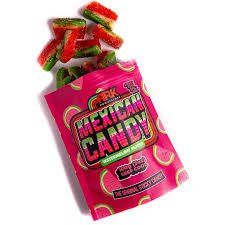Mexican Candy A Deep Dive into Mexico’s Sweet and Spicy Heritage

Mexican candy is a vibrant tapestry of flavors, textures, and colors, reflecting the rich cultural heritage and diverse regional influences of Mexico. From the bustling markets of Oaxaca to the festive streets of Mexico City, these confections tell stories of ancient traditions, indigenous ingredients, and colonial influences. In this comprehensive exploration, we delve into the origins, key ingredients, regional variations, and cultural significance of Mexican candy, celebrating its role as a sweet emblem of Mexico’s history and identity.
The Origins of Mexican Candy
The roots of Mexican candy trace back to the ancient civilizations of Mesoamerica. The Aztecs and Mayans were pioneers in utilizing native ingredients like cacao, maize, and various fruits to create confections. Cacao, for instance, was revered not just as a food item but also as currency and a ceremonial offering. With the arrival of the Spanish in the 16th century, new ingredients such as sugar, almonds, and cinnamon were introduced, leading to a fusion of indigenous and European culinary practices. This blend birthed the diverse array of sweets that define Mexican candy today.
Key Ingredients in Mexican Candy
The distinctiveness of Mexican candy lies in its unique combination of ingredients that balance sweet, sour, and spicy flavors:
- Tamarind: A sour fruit that serves as the base for many candies, providing a tangy contrast to sweetness and spice.
- Chili Peppers: Varieties like chili powder and chili flakes are used to add heat, creating a harmonious blend with sweet elements.
- Cajeta: A rich caramel made from sweetened goat’s milk, originating from Celaya, Guanajuato. It’s used as a filling, topping, or enjoyed on its own.
- Amaranth: A native grain incorporated into candies like Alegría, offering a crunchy texture and nutty flavor.
- Nuts and Seeds: Ingredients like peanuts, pecans, and pumpkin seeds are commonly used, adding crunch and depth to various sweets.
- Fruits: Tropical fruits such as mango, guava, and tamarind are frequently featured, often combined with chili for an extra kick.
Popular Types of Mexican Candy

The diversity of Mexican candy is a testament to the country’s rich cultural tapestry. Here are some of the most cherished confections:
Pulparindo
Pulparindo is a spicy-sour treat made from tamarind pulp, sugar, salt, and chili peppers, offering a unique blend of tartness and heat. Available in flavors like mango, watermelon, and apricot, it’s a staple in Mexican snacking culture. citeturn0search13
Alegría
Alegría is a traditional candy from Santiago Tulyehualco, Mexico City, made from amaranth seeds mixed with honey or sugar. Recognized as part of Mexico City’s intangible cultural heritage, it offers a crunchy texture and a sweet, slightly nutty flavor. citeturn0search15
Cajeta de Celaya
Originating from Celaya, Guanajuato, cajeta is a caramel-like syrup made by simmering goat’s milk with sugar until it thickens and caramelizes. It’s enjoyed on its own, as a spread, or as a topping for various desserts. citeturn0search18
Muéganos
Muéganos are pastries consisting of fried wheat flour dough flavored with anise and cinnamon, coated in a syrup made from piloncillo (unrefined brown sugar) and cinnamon. They offer a crunchy texture with a sweet and spicy kick. citeturn0search0
Palanquetas
Palanquetas are crunchy bars made from caramelized sugar or honey mixed with nuts, seeds, or grains. Common variations include peanuts, sunflower seeds, or amaranth, offering a satisfying crunch and a blend of sweet and nutty flavors. citeturn0search0
Dulce de Camote (Sweet Potato Candy)
Originating from Puebla, this soft and sweet candy is made by boiling sweet potatoes with sugar and flavorings like lemon or orange essence. The mixture is mashed, molded into tubes, and wrapped in wax paper, resulting in a treat that’s both comforting and delicious. citeturn0search0
Borrachitos
Borrachitos are creamy, gelatinous sweets soaked in syrup and flavored with spirits like rum or tequila. They offer a unique combination of sweetness and alcohol-infused warmth, making them a distinctive offering in the world of Mexican candy. citeturn0search0
Cocadas
Cocadas are chewy coconut confections made with grated coconut, sugar, and milk. Often served in scooped-out lime halves, they provide a tropical sweetness that’s both rich and refreshing. citeturn0search0
Jamoncillo (Dulce de Leche)

Jamoncillo, also known as dulce de leche, is a type of milk fudge made by simmering milk and sugar until it thickens and solidifies. Chopped nuts are often added for extra texture. This sweet treat is cherished for its rich, creamy flavor and firm, crumbly texture. citeturn0search0
Mazapán de La Rosa
Mazapán de La Rosa is a popular Mexican candy made from crushed peanuts and sugar, molded into small discs. Its crumbly texture and sweet, nutty flavor have made it a favorite among both children and adults. citeturn0search0
Pelón Pelo Rico
Pelón Pelo Rico is a squeezable candy made from tamarind and chili flavors. Its name translates to “Rich Hairy Little Ball,” referring to the fun, hair-like strands that emerge when the bottle is squeezed. This treat offers a playful and flavorful experience, combining tangy, spicy, and sweet elements in every bite. citeturn0search0
Also read Barbers Near Me Finding the Perfect Grooming Experience in Karachi
Duvalín
Duvalín is a creamy, two-flavored candy typically offered in hazelnut, strawberry, and vanilla combinations.







